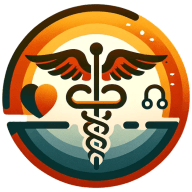8 Strategies for Staying Updated On Medical Advancements
Navigating the ever-evolving landscape of medical science requires a strategic approach. This article demystifies the complexity by offering 8 proven strategies, enriched with the wisdom of seasoned experts. Gain an edge in the field with insights that bridge the gap between continuous learning and practical application.
- Structured Learning and Implementation
- Engage with Peer-Reviewed Research
- Multi-Source Continuous Learning Approach
- Ongoing Professional Development
- Foster Relationships and Analyze Market Dynamics
- Review Journals and Attend Conferences
- Engage with Modern and Traditional Medicine
- Consistency and Curated Expert Network
Structured Learning and Implementation
One strategy I rely on to stay current with medical advancements is creating a structured approach to learning and implementation. I start by tapping into trusted sources like medical journals, conferences, and AI-driven tools like UpToDate. These channels ensure I'm aware of the latest research and industry trends. Networking with peers also keeps me grounded in practical insights. Conversations often reveal how others have implemented innovations, sparking ideas for my organization. Staying informed is only part of the equation. Translating that knowledge into action is where real impact happens. For example, after learning about AI-assisted imaging tools, I initiated a pilot program to improve diagnostic accuracy in our radiology department. The result? Shorter patient wait times and fewer errors, proving the value of integrating new advancements. Sharing knowledge with my team is another critical step. I organize workshops and CME sessions tailored to specific roles within the organization. After attending a telehealth seminar, I led staff training on virtual care best practices. This not only empowered my team but also significantly improved our patient satisfaction scores. Collaboration and data are essential to ensure success. When introducing new tools or practices, I prioritize cross-departmental input and track key performance metrics. For instance, adopting remote monitoring for chronic conditions led to a 25% drop in ER visits—a clear sign that the change worked. Ultimately, I believe staying current is about more than just personal growth. It's about building a culture of continuous improvement that benefits both patients and the organization. By focusing on practical implementation and empowering teams, we can turn knowledge into measurable impact.

Engage with Peer-Reviewed Research
Staying current requires disciplined engagement with peer-reviewed research and collaboration with academic networks like NYU. I prioritize reviewing emerging studies-such as recent findings on TMS protocols for Long COVID-related Depression-and integrating actionable insights into our practice. For example, refining TMS dosing based on efficacy data allows us to personalize treatments, improving outcomes for patients with resistant Depression. This approach ensures our care aligns with cutting-edge science while maintaining the compassionate, precision-driven ethos of Mid City TMS.

Multi-Source Continuous Learning Approach
Good day,
What strategy do you use to stay up-to-date on medical advancements and industry trends as a medical director?
A multi-source approach to continuous learning is one key strategy I use to stay up-to-date on the latest medical advancements. I regularly review high-impact journals like Nature Neuroscience, The Lancet, and JAMA Neurology to stay informed on emerging research. Additionally, I engage in collaborative discussions with experts, attend international conferences, participate in panel discussions, and network with leaders in the field. These interactions provide real-time insights into groundbreaking discoveries and evolving best practices.
I also integrate technology-driven learning, online medical forums, and digital platforms like PubMed alerts and ResearchGate to streamline access to the most relevant and credible studies. Combining these strategies ensures that I remain well-informed, critically engaged, and able to apply the latest scientific knowledge to my work.
How do you ensure this knowledge translates into improved patient care or organizational efficiency?
I prioritize evidence-based applications to ensure the latest medical advancements translate into improved patient care and organizational efficiency. This involves critically analyzing new research and integrating only clinically relevant findings into practice. By refining treatment protocols and leveraging insights from neuroscience, theoretical biology, and digital health, I help optimize diagnostic accuracy and therapeutic strategies. This approach ensures that new knowledge is not just theoretical but actively improves patient outcomes.
I also utilize technology and data-driven decision-making to enhance efficiency. AI-driven analytics, predictive modeling, and platforms like VMeDx enable faster, more precise diagnostics and streamlined workflows. By incorporating automation and digital tools, I ensure that healthcare teams can access the most up-to-date information, reducing inefficiencies and enhancing decision-making. This improves patient care and enhances the operational flow within medical organizations.
Lastly, I focus on collaborative leadership and continuous education to ensure that advancements benefit the entire healthcare team. Through structured training, interdisciplinary discussions, and ongoing professional development, I foster a culture where physicians and staff are equipped to implement the latest research effectively.

Ongoing Professional Development
To stay current on medical advancements and industry trends, I make it a priority to engage in ongoing professional development. This includes attending webinars, reading research publications, and staying connected with peers through medical societies. I also participate in specialized training programs and workshops, which help me keep pace with innovations in patient care, especially within the vascular and pain management fields.
I also make sure to leverage the knowledge and insights from my team. Regular team discussions and case reviews help us incorporate the latest evidence-based practices into our daily operations. By doing so, we ensure that our patients receive the most up-to-date, effective care, and we can continuously refine our processes to improve efficiency and outcomes across the clinic. This dual approach of continuous learning and collaborative practice helps translate advancements directly into enhanced patient care and organizational performance.
Foster Relationships and Analyze Market Dynamics
As Owner and President of Portiva, one key strategy I use to stay up-to-date on the latest medical advancements and industry trends is fostering strong relationships with healthcare professionals, actively engaging in industry forums, and continuously analyzing healthcare market dynamics. At Portiva, we maintain a pulse on industry shifts by collaborating with physicians, practice managers, and remote medical assistants to understand their evolving challenges and needs. Additionally, I stay informed through reputable medical journals, webinars, and industry conferences to ensure our services remain aligned with the latest trends in healthcare delivery and telemedicine.
To translate this knowledge into improved patient care and organizational efficiency, we integrate cutting-edge technology and best practices into our platform, ensuring that our virtual assistants are well-trained and equipped with the latest tools to support medical practices effectively. By leveraging AI-driven automation, compliance-focused solutions, and tailored training programs, we empower healthcare professionals to streamline workflows, reduce administrative burdens, and enhance patient engagement. This proactive approach ensures that our clients can provide high-quality care while optimizing operational efficiency, ultimately improving outcomes for both practitioners and patients.

Review Journals and Attend Conferences
One key strategy I use to stay up-to-date on the latest medical advancements and industry trends is regularly reviewing reputable medical journals, attending professional conferences, and participating in continuing education programs. I also stay connected with other health care professionals through discussions and collaborative networks to exchange insights on best practices.
To ensure this knowledge improves patient care, I focus on integrating evidence-based treatments into our practice, adopting new guidelines that enhance patient outcomes, and refining clinical workflows for greater efficiency. Additionally, I encourage ongoing training for our team to maintain high standards of care and adapt to advancements in medical technology and treatment options.

Engage with Modern and Traditional Medicine
To stay current with the latest medical advancements and industry trends, I actively engage with both modern medical research and Traditional Chinese Medicine (TCM) studies. This includes reviewing peer-reviewed journals, attending specialized conferences, and collaborating with healthcare professionals across disciplines. Staying informed about developments in acupuncture, herbal medicine, and integrative treatments ensures that my approach remains both evidence-based and patient-centered.
This knowledge directly enhances patient care by refining treatment strategies and incorporating new, research-backed techniques for pain management, chronic conditions, and overall well-being. By bridging the gap between Eastern and Western medicine, I aim to provide comprehensive care that improves patient outcomes while maintaining efficiency in clinical practice.

Consistency and Curated Expert Network
Staying up-to-date on the latest medical advancements and industry trends is all about consistency. I make it a habit to engage with multiple sources because no single source gives the full picture. It's all about layering different perspectives to stay informed.
One strategy that works well is curating a trusted network of experts and thought leaders. At Carepatron, we're constantly observant of feedback loops and even engage in conversation with practitioners, researchers, and innovators who are shaping the industry. These discussions offer real-world insights that go beyond what you'd get from just reading studies or reports. Being part of professional communities, both online and offline, also helps to keep a pulse on emerging trends.
We also make sure that the knowledge we gain actually translates into meaningful improvements. When we identify new advancements, we focus on how they integrate into daily practice.



